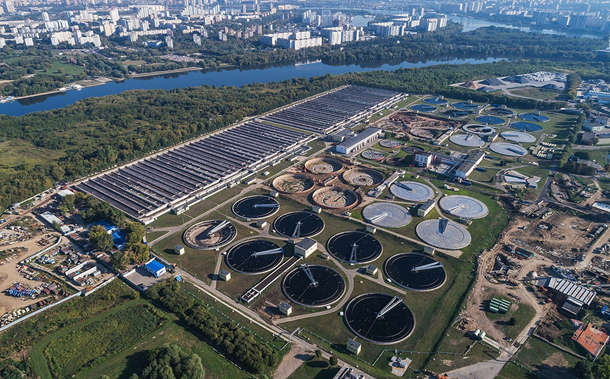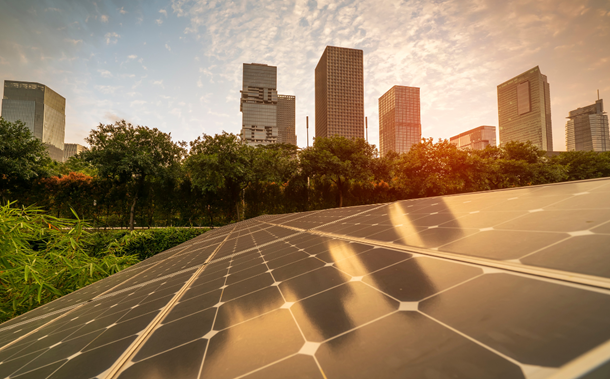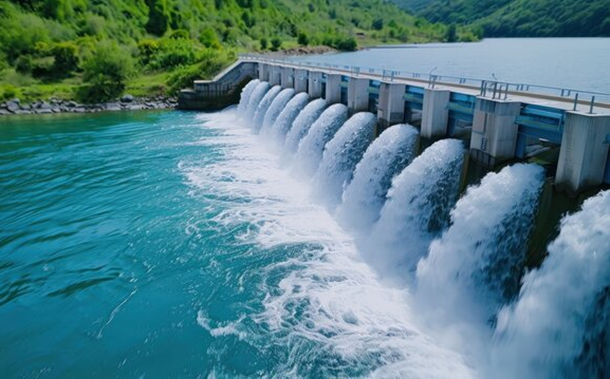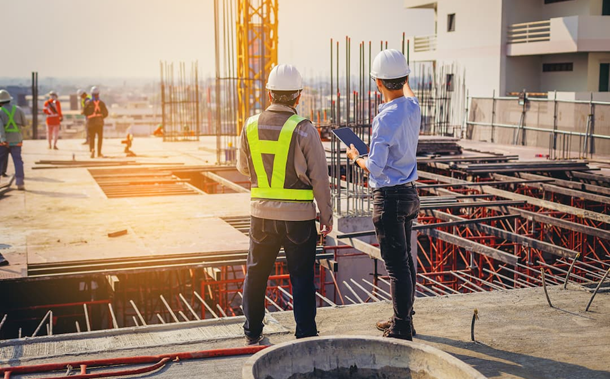Effect of Curing Temperature on Mechanical Properties of Sanitary Ware Porcelain based Geopolymer Mortar
Downloads
Doi:10.28991/CEJ-2023-09-08-01
Full Text:PDF
Downloads
[2] Baraldi, L. (2021) World sanitaryware imports and exports, Ceramic world review technology news markets, 64-75. Available online: https://www.ceramicworldweb.com/en/economics-and-markets/world-sanitaryware-imports-and-exports-2021 (accessed on April 2023).
[3] Zuda, L., Bayer, P., Rovnaník, P., & ÄŒerní½, R. (2008). Mechanical and hydric properties of alkali-activated aluminosilicate composite with electrical porcelain aggregates. Cement and Concrete Composites, 30(4), 266–273. doi:10.1016/j.cemconcomp.2007.11.003.
[4] Fortuna, A., Fortuna, D.M., Martini, E. (2017). An Industrial Approach to Ceramics: Sanitaryware. Plinius, 43, 138–145. doi:10.19276/plinius.2017.02019.
[5] Nasir, M., Johari, M. A. M., Maslehuddin, M., Yusuf, M. O., & Al-Harthi, M. A. (2020). Influence of heat curing period and temperature on the strength of silico-manganese fume-blast furnace slag-based alkali-activated mortar. Construction and Building Materials, 251, 118961. doi:10.1016/j.conbuildmat.2020.118961.
[6] Muñiz-Villarreal, M. S., Manzano-Ramírez, A., Sampieri-Bulbarela, S., Gasca-Tirado, J. R., Reyes-Araiza, J. L., Rubio-ívalos, J. C., Pérez-Bueno, J. J., Apatiga, L. M., Zaldivar-Cadena, A., & Amigó-Borrás, V. (2011). The effect of temperature on the geopolymerization process of a metakaolin-based geopolymer. Materials Letters, 65(6), 995–998. doi:10.1016/j.matlet.2010.12.049.
[7] Hardjito, D., & Rangan, B. V. (2005). Development and properties of low-calcium fly ash-based geopolymer concrete. Research Report GC1, Curtin University of Technology, Perth, Australia.
[8] Provis, J. L., & Van Deventer, J. S. J. (2009). Geopolymers: structures, processing, properties and industrial applications. Elsevier, Amsterdam, Netherlands.
[9] Arnoult, M., Perronnet, M., Autef, A., & Rossignol, S. (2018). How to control the geopolymer setting time with the alkaline silicate solution. Journal of Non-Crystalline Solids, 495(1), 59–66. doi:10.1016/j.jnoncrysol.2018.02.036.
[10] Luhar, I., Luhar, S., Abdullah, M. M. A. B., NabiaŠ‚ek, M., Sandu, A. V., Szmidla, J., Jurczyńska, A., Razak, R. A., Aziz, I. H. A., Jamil, N. H., & Deraman, L. M. (2021). Assessment of the suitability of ceramic waste in geopolymer composites: An appraisal. Materials, 14(12), 3279. doi:10.3390/ma14123279.
[11] Shoaei, P., Musaeei, H. R., Mirlohi, F., Narimani zamanabadi, S., Ameri, F., & Bahrami, N. (2019). Waste ceramic powder-based geopolymer mortars: Effect of curing temperature and alkaline solution-to-binder ratio. Construction and Building Materials, 227, 116686. doi:10.1016/j.conbuildmat.2019.116686.
[12] Reig, L., Tashima, M. M., Soriano, L., Borrachero, M. V., Monzó, J., & Payá, J. (2013). Alkaline activation of ceramic waste materials. Waste and Biomass Valorization, 4(4), 729–736. doi:10.1007/s12649-013-9197-z.
[13] Mo, B. H., Zhu, H., Cui, X. M., He, Y., & Gong, S. Y. (2014). Effect of curing temperature on geopolymerization of metakaolin-based geopolymers. Applied Clay Science, 99, 144–148. doi:10.1016/j.clay.2014.06.024.
[14] Nagral, M. R., Ostwal, T., & Chitawadagi, M. V. (2014) Effect of curing temperature and curing hours on the properties of geo-polymer concrete, International Journal of Computational Engineering Research. 4(9), 2250-3005.
[15] Duxson, P., Fernández-Jiménez, A., Provis, J. L., Lukey, G. C., Palomo, A., & Van Deventer, J. S. J. (2007). Geopolymer technology: The current state of the art. Journal of Materials Science, 42(9), 2917–2933. doi:10.1007/s10853-006-0637-z.
[16] de Oliveira, L. B., de Azevedo, A. R. G., Marvila, M. T., Pereira, E. C., Fediuk, R., & Vieira, C. M. F. (2022). Durability of geopolymers with industrial waste. Case Studies in Construction Materials, 16, 839. doi:10.1016/j.cscm.2021.e00839.
[17] Kaur, M., Singh, J., & Kaur, M. (2018). Microstructure and strength development of fly ash-based geopolymer mortar: Role of nano-metakaolin. Construction and Building Materials, 190, 672–679. doi:10.1016/j.conbuildmat.2018.09.157.
[18] Marvila, M. T., Azevedo, A. R. G. de, & Vieira, C. M. F. (2021). Reaction mechanisms of alkali-activated materials. Revista IBRACON de Estruturas e Materiais, 14(3). doi:10.1590/s1983-41952021000300009.
[19] Amigó, J. M., Serrano, F. J., Kojdecki, M. A., Bastida, J., Esteve, V., Reventós, M. M., & Martí, F. (2005). X-ray diffraction microstructure analysis of mullite, quartz and corundum in porcelain insulators. Journal of the European Ceramic Society, 25(9), 1479–1486. doi:10.1016/j.jeurceramsoc.2004.05.019.
[20] Liu, T., Zhang, J., Wu, J., Liu, J., Li, C., Ning, T., Luo, Z., Zhou, X., Yang, Q., & Lu, A. (2019). The utilization of electrical insulators waste and red mud for fabrication of partially vitrified ceramic materials with high porosity and high strength. Journal of Cleaner Production, 223, 790–800. doi:10.1016/j.jclepro.2019.03.162.
[21] Amari, S., Darestani, M., Millar, G. J., Rintoul, L., & Samali, B. (2019). Microchemistry and microstructure of sustainable mined zeolite-geopolymer. Journal of Cleaner Production, 234, 1165–1177. doi:10.1016/j.jclepro.2019.06.237.
[22] Iqbal, Y., & Lee, W. E. (2000). Microstructural evolution in triaxial porcelain. Journal of the American Ceramic Society, 83(12), 3121–3127. doi:10.1111/j.1151-2916.2000.tb01692.x.
[23] ZegardŠ‚o, B., SzelÄ…g, M., & Ogrodnik, P. (2016). Ultra-high strength concrete made with recycled aggregate from sanitary ceramic wastes – The method of production and the interfacial transition zone. Construction and Building Materials, 122, 736–742. doi:10.1016/j.conbuildmat.2016.06.112.
[24] Vitola, L., Pundiene, I., Pranckeviciene, J., & Bajare, D. (2020). The impact of the amount of water used in activation solution and the initial temperature of paste on the rheological behaviour and structural evolution of metakaolin-based geopolymer pastes. Sustainability (Switzerland), 12(19), 8216. doi:10.3390/su12198216.
[25] Chi, M. (2015). Effects of modulus ratio and dosage of alkali-activated solution on the properties and micro-structural characteristics of alkali-activated fly ash mortars. Construction and Building Materials, 99, 128–136. doi:10.1016/j.conbuildmat.2015.09.029.
[26] Geraldo, R. H., Fernandes, L. F. R., & Camarini, G. (2021). Mechanical properties of porcelain waste alkali-activated mortar. Open Ceramics, 8, 100184. doi:10.1016/j.oceram.2021.100184.
[27] Xu, N., Li, S., Li, Y., Xue, Z., Yuan, L., Zhang, J., & Wang, L. (2015). Preparation and properties of porous ceramic aggregates using electrical insulators waste. Ceramics International, 41(4), 5807–5811. doi:10.1016/j.ceramint.2015.01.009.
[28] ASTM C618-19. (2022). Standard Specification for Coal Fly Ash and Raw or Calcined Natural Pozzolan for Use in Concrete. ASTM International, Pennsylvania, United States. doi:10.1520/C0618-19.
[29] Li, H. Jian, & Sun, H. hu. (2009). Microstructure and cementitious properties of calcined clay-containing gangue. International Journal of Minerals, Metallurgy and Materials, 16(4), 482–486. doi:10.1016/S1674-4799(09)60084-4.
[30] Belmokhtar, N., El Ayadi, H., Ammari, M., & Ben Allal, L. (2018). Effect of structural and textural properties of a ceramic industrial sludge and kaolin on the hardened geopolymer properties. Applied Clay Science, 162, 1–9. doi:10.1016/j.clay.2018.05.029.
[31] ASTM C187-04. (2010) Standard Test Method for Normal Consistency of Hydraulic Cement. ASTM International, Pennsylvania, United States. doi:10.1520/C0187-04.
[32] ASTM C642-21. (2022). Standard Test Method for Density, Absorption, and Voids in Hardened Concrete. ASTM International, Pennsylvania, United States. doi:10.1520/C0642-21.
[33] Collins, F., & Sanjayan, J. G. (1999). Strength and shrinkage properties of alkali-activated slag concrete containing porous coarse aggregate. Cement and Concrete Research, 29(4), 607–610. doi:10.1016/S0008-8846(98)00203-8.
[34] Vieira, A. W., Innocentini, M. D. de M., Mendes, E., Gomes, T., Demarch, A., Montedo, O. R. K., & Angioletto, E. (2017). Comparison of Methods for Determining the Water Absorption of Glazed Porcelain Stoneware Ceramic Tiles. Materials Research, 20(suppl 2), 637–643. doi:10.1590/1980-5373-mr-2017-0089.
[35] Reddy, M. S., Dinakar, P., & Rao, B. H. (2016). A review of the influence of source material's oxide composition on the compressive strength of geopolymer concrete. Microporous and Mesoporous Materials, 234, 12–23. doi:10.1016/j.micromeso.2016.07.005.
[36] ASTM C191-8a. (2019). Standard Test Method for Time of Setting of Hydraulic Cement by Vicat Needle. ASTM International, Pennsylvania, United States. doi:10.1520/C0191-18A.
[37] Temuujin, J., Williams, R. P., & van Riessen, A. (2009). Effect of mechanical activation of fly ash on the properties of geopolymer cured at ambient temperature. Journal of Materials Processing Technology, 209(12–13), 5276–5280. doi:10.1016/j.jmatprotec.2009.03.016.
[38] Linda Bih, N., Aboubakar Mahamat, A., Hounkpè Bidossèssi, J., Azikiwe Onwualu, P., & Boakye, E. E. (2021). The effect of polymer waste addition on the compressive strength and water absorption of geopolymer ceramics. Applied Sciences (Switzerland), 11(8), 3540. doi:10.3390/app11083540.
[39] Malkawi, A. B., Nuruddin, M. F., Fauzi, A., Almattarneh, H., & Mohammed, B. S. (2016). Effects of Alkaline Solution on Properties of the HCFA Geopolymer Mortars. Procedia Engineering, 148, 710–717. doi:10.1016/j.proeng.2016.06.581.
[40] Jindal, B. B., Singhal, D., Sharma, S. K., Ashish, D. K., & Parveen, P. (2017). Improving compressive strength of low calcium fly ash geopolymer concrete with alccofine. Advances in Concrete Construction, 5(1), 17–29. doi:10.12989/acc.2017.5.1.17.
[41] Cristelo, N., Coelho, J., Miranda, T., Palomo, í., & Fernández-Jiménez, A. (2019). Alkali activated composites – An innovative concept using iron and steel slag as both precursor and aggregate. Cement and Concrete Composites, 103, 11–21. doi:10.1016/j.cemconcomp.2019.04.024.
[42] Ukritnukun, S., Koshy, P., Rawal, A., Castel, A., & Sorrell, C. C. (2020). Predictive model of setting times and compressive strengths for low-alkali, ambient-cured, fly ash/slag-based geopolymers. Minerals, 10(10), 1–21. doi:10.3390/min10100920.
[43] Zulkifli, N. N. I., Abdullah, M. M. A. B., PrzybyŠ‚, A., Pietrusiewicz, P., Salleh, M. A. A. M., Aziz, I. H., Kwiatkowski, D., Gacek, M., Gucwa, M., & Chaiprapa, J. (2021). Influence of sintering temperature of kaolin, slag, and fly ash geopolymers on the microstructure, phase analysis, and electrical conductivity. Materials, 14(9), 2213. doi:10.3390/ma14092213.
[44] Liew, Y. M., Kamarudin, H., Al Bakri, A. M. M., Bnhussain, M., Luqman, M., Nizar, I. K., Ruzaidi, C. M., & Heah, C. Y. (2013). Effect of curing regimes on metakaolin geopolymer pastes produced from geopolymer powder. Advanced Materials Research, 626, 931–936. doi:10.4028/www.scientific.net/AMR.626.931.
[45] Sindhunata, Van Deventer, J. S. J., Lukey, G. C., & Xu, H. (2006). Effect of curing temperature and silicate concentration on fly-ash-based geopolymerization. Industrial and Engineering Chemistry Research, 45(10), 3559–3568. doi:10.1021/ie051251p.
[46] Gowram, I. (2022). Experimental and analytical study of high-strength concrete containing natural zeolite and additives. Civil Engineering Journal, 8(10), 2318-2335. doi:10.28991/CEJ-2022-08-10-019.
[47] Ranjbar, N., Kashefi, A., & Maheri, M. R. (2018). Hot-pressed geopolymer: Dual effects of heat and curing time. Cement and Concrete Composites, 86, 1–8. doi:10.1016/j.cemconcomp.2017.11.004.
[48] Mallikarjuna Rao, G., & Gunneswara Rao, T. D. (2015). Final Setting Time and Compressive Strength of Fly Ash and GGBS-Based Geopolymer Paste and Mortar. Arabian Journal for Science and Engineering, 40(11), 3067–3074. doi:10.1007/s13369-015-1757-z.
[49] Vikas, G., & Rao, T. D. G. (2021). Setting Time, Workability and Strength Properties of Alkali Activated Fly Ash and Slag Based Geopolymer Concrete Activated with High Silica Modulus Water Glass. Iranian Journal of Science and Technology - Transactions of Civil Engineering, 45(3), 1483–1492. doi:10.1007/s40996-021-00598-8.
[50] Ababneh, A., Matalkah, F., & Aqel, R. (2020). Synthesis of kaolin-based alkali-activated cement: carbon footprint, cost and energy assessment. Journal of Materials Research and Technology, 9(4), 8367–8378. doi:10.1016/j.jmrt.2020.05.116.
[51] Karakoç, M. B., Türkmen, Ä°., Maraş, M. M., Kantarci, F., Demirboğa, R., & Uğur Toprak, M. (2014). Mechanical properties and setting time of ferrochrome slag based geopolymer paste and mortar. Construction and Building Materials, 72, 283–292. doi:10.1016/j.conbuildmat.2014.09.021.
[52] Ranjbar, N., Kuenzel, C., Spangenberg, J., & Mehrali, M. (2020). Hardening evolution of geopolymers from setting to equilibrium: A review. Cement and Concrete Composites, 114, 103729. doi:10.1016/j.cemconcomp.2020.103729.
[53] Elyamany, H. E., Abd Elmoaty, A. E. M., & Elshaboury, A. M. (2018). Setting time and 7-day strength of geopolymer mortar with various binders. Construction and Building Materials, 187, 974–983. doi:10.1016/j.conbuildmat.2018.08.025.
[54] Nagajothi, S., Elavenil, S., Angalaeswari, S., Natrayan, L., & Mammo, W. D. (2022). Durability studies on fly ash based geopolymer concrete incorporated with slag and alkali solutions. Advances in Civil Engineering, 2022. doi:10.1155/2022/7196446.
[55] Olivia, M., & Nikraz, H. (2011). Strength and water penetrability of fly ash geopolymer concrete. Journal of Engineering and Applied Sciences, 6(7), 70-78.
[56] Lavanya, G., & Jegan, J. (2015). Durability Study on High Calcium Fly Ash Based Geopolymer Concrete. Advances in Materials Science and Engineering, 2015, 1–7. doi:10.1155/2015/731056.
[57] Zaidi, F.H.A., Ahmad, R., Mustafa Al Bakri Abdullah, M., Faheem Mohd Tahir, M., Yahya, Z., Mastura Wan Ibrahim, W., & Syauqi Sauffi, A. (2019). Performance of Geopolymer Concrete when Exposed to Marine Environment. IOP Conference Series: Materials Science and Engineering, 551(1), 012092. doi:10.1088/1757-899x/551/1/012092.
[58] Zuaiter, M., El-Hassan, H., El-Maaddawy, T., & El-Ariss, B. (2022). Properties of Slag-Fly Ash Blended Geopolymer Concrete Reinforced with Hybrid Glass Fibers. Buildings, 12(8), 1114. doi:10.3390/buildings12081114.
[59] El-Hassan, H., & Elkholy, S. (2021). Enhancing the performance of Alkali-Activated Slag-Fly ash blended concrete through hybrid steel fiber reinforcement. Construction and Building Materials, 311, 125313. doi:10.1016/j.conbuildmat.2021.125313.
[60] Ramli, M. I. I., Salleh, M. A. A. M., Abdullah, M. M. A. B., Aziz, I. H., Ying, T. C., Shahedan, N. F., Kockelmann, W., Fedrigo, A., Sandu, A. V., Vizureanu, P., Chaiprapa, J., & Nergis, D. D. B. (2022). The Influence of Sintering Temperature on the Pore Structure of an Alkali-Activated Kaolin-Based Geopolymer Ceramic. Materials, 15(7). doi:10.3390/ma15072667.
[61] Arslan, A. A., Uysal, M., Yılmaz, A., Al-mashhadani, M. M., Canpolat, O., Šžahin, F., & Aygörmez, Y. (2019). Influence of wetting-drying curing system on the performance of fiber reinforced metakaolin-based geopolymer composites. Construction and Building Materials, 225, 909-926. doi:10.1016/j.conbuildmat.2019.07.235.
[62] Manjunath, G. S., Giridhar, C., & Jadhav, M. (2011). Compressive Strength Development in Ambient Cured Geo-polymer Mortar. International Journal of Earth Sciences and Engineering, 4(6), 830-834.
[63] Zhang, P., Wang, K., Wang, J., Guo, J., & Ling, Y. (2021). Macroscopic and microscopic analyses on mechanical performance of metakaolin/fly ash based geopolymer mortar. Journal of Cleaner Production, 294, 126193. doi:10.1016/j.jclepro.2021.126193.
[64] Cheng, T. W., & Chiu, J. P. (2003). Fire-resistant geopolymer produce by granulated blast furnace slag. Minerals Engineering, 16(3), 205–210. doi:10.1016/S0892-6875(03)00008-6.
[65] Wang, J. W., & Cheng, T. W. (2003). Production geopolymer materials by coal fly ash. Proceedings of the 7th International Symposium on East Asian Resources Recycling Technology, 10-14 November, 2003, Tainan, Taiwan.
[66] Mohd Mortar, N. A., Abdullah, M. M. A. B., Abdul Razak, R., Abd Rahim, S. Z., Aziz, I. H., NabiaŠ‚ek, M., Jaya, R. P., Semenescu, A., Mohamed, R., & Ghazali, M. F. (2022). Geopolymer Ceramic Application: A Review on Mix Design, Properties and Reinforcement Enhancement. Materials, 15(21), 7567. doi:10.3390/ma15217567.
[67] Poornima, N., Katyal, D., Revathi, T., Sivasakthi, M., & Jeyalakshmi, R. (2021). Effect of curing on mechanical strength and microstructure of fly ash blend GGBS geopolymer, Portland cement mortar and its behavior at elevated temperature. Materials Today: Proceedings, 47, 863–870. doi:10.1016/j.matpr.2021.04.087.
[68] Girish, M. G., Shetty, K. K., & Nayak, G. (2022). Synthesis of Fly-ash and Slag Based Geopolymer Concrete for Rigid Pavement. Materials Today: Proceedings, 60, 46–54. doi:10.1016/j.matpr.2021.11.332.
[69] Ma, X., Zhao, Y., Liu, M., Xia, Y., & Yang, Y. (2023). Sodium gluconate as a retarder modified sewage sludge ash-based geopolymers: Mechanism and environmental assessment. Journal of Cleaner Production, 138317. doi:10.1016/j.jclepro.2023.138317.
[70] Hájková, P. (2018). Kaolinite claystone-based geopolymer materials: Effect of chemical composition and curing conditions. Minerals, 8(10), 444. doi:10.3390/min8100444.
[71] Matalkah, F., Aqel, R., & Ababneh, A. (2020). Enhancement of the Mechanical Properties of Kaolin Geopolymer Using Sodium Hydroxide and Calcium Oxide. Procedia Manufacturing, 44, 164–171. doi:10.1016/j.promfg.2020.02.218.
- Authors retain all copyrights. It is noticeable that authors will not be forced to sign any copyright transfer agreements.
- This work (including HTML and PDF Files) is licensed under a Creative Commons Attribution 4.0 International License.![]()














